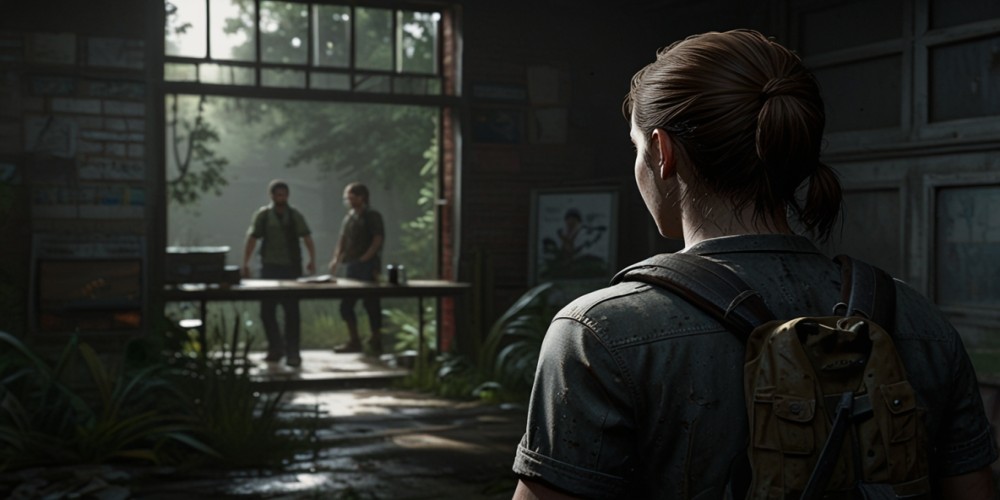The Last of Us Part II: An In-Depth Analysis of the Much-Anticipated Sequel
Sep-20-2024

The Last of Us Part II, developed by Naughty Dog, has become one of the most discussed sequels in recent gaming history. Following the huge success of its predecessor, the game did not shy away from ambitious storytelling and groundbreaking graphics. Set in a post-apocalyptic world, this title delivers an emotionally charged experience that challenges players both intellectually and emotionally.
This article delves into various aspects of The Last of Us Part II, offering a comprehensive understanding of why this game has generated so much buzz and debate. From its narrative depth to graphical splendor, there is much to explore.
Plot and Setting

The storyline of The Last of Us Part II picks up several years after the events of the original game. Players once again find themselves in a world ravaged by a fungal pandemic that has decimated human civilization. The focus is primarily on Ellie, who is now older and more hardened by the harsh realities of her world.
Naughty Dog crafted a narrative that doesn't shy away from dark themes and moral complexities. The setting, a mix of dilapidated urban centers and overgrown nature, beautifully complements the weighty story, painting a vivid picture of a world where survival comes at great personal cost.
Character Development
One of the standout elements of The Last of Us Part II is its deep character development. Ellie, once an innocent girl, evolves into a complex character driven by vengeance and loss. Players witness her grappling with her identity and moral compass as she navigates a treacherous world.
New characters also play crucial roles in shaping the storyline, adding layers of emotional complexity. Abby, another central figure, offers a parallel narrative that challenges the player's preconceived notions about right and wrong, making the experience all the more immersive and thought-provoking.
Gameplay Mechanics

The gameplay in The Last of Us Part II builds upon the foundation laid by its predecessor, incorporating elements of stealth, combat, and exploration. Improved AI makes encounters with both human and infected adversaries more challenging, demanding strategic thinking and adaptability.
The game's mechanics also focus heavily on crafting and resource management, emphasizing the dire circumstances of the post-apocalyptic setting. Exploration rewards players with tools and materials necessary for survival, enriching the overall experience and engagement.
Graphics and Visuals

Graphically, The Last of Us Part II is a standout title on the PlayStation platform. The attention to detail is astonishing, from the dynamically lit environments to the intricacies of character animations. The level of realism achieved in facial expressions and body language adds a profound emotional depth to the storyline.
The environments are equally impressive, rendering a world that feels both expansive and claustrophobic. Whether it's the decaying urban landscapes or the lush, overgrown wilderness, every visual element is meticulously crafted to draw players into its world.
Sound Design and Music
The auditory experience in The Last of Us Part II is just as crucial as its visual counterpart. Gustavo Santaolalla returns with a hauntingly beautiful score that underscores the game's emotional highs and lows. Music is used sparingly but effectively, heightening tension and providing relief at just the right moments.
Sound design is employed masterfully, with environmental sounds adding an extra layer of immersion. Everything from the rustling of leaves to distant gunfire creates an atmosphere that is both palpable and immersive, making the world feel vividly real.
Social Themes

The Last of Us Part II tackles several social issues head-on, making it a game that resonates on multiple levels. Topics like revenge, forgiveness, and the human condition are explored in depth, offering players much to ponder long after they've put down the controller.
The game doesn't shy away from controversial themes, challenging players to empathize with characters whose actions may be morally ambiguous. This willingness to delve into complex social issues is part of what makes the game so compelling and thought-provoking.
Reception and Controversy
The Last of Us Part II has been met with a mixture of critical acclaim and public debate. While many praised its storytelling, character development, and technical achievements, others found fault with its narrative choices and pacing. This has led to a polarized reception, with passionate discussions erupting across various platforms.
Despite the controversy, the game has garnered numerous awards and accolades, underscoring its impact on the gaming community. The debate surrounding the game has only served to highlight its significance and the emotional investment it inspires in its audience.
Legacy and Impact

The Last of Us Part II has undoubtedly left its mark on the gaming industry. Its ambitious storytelling and technical prowess have set new standards for what video games can achieve. The game's narrative complexity and emotional depth have raised the bar for future titles, influencing both developers and players alike.
In addition to its critical and commercial success, The Last of Us Part II has sparked meaningful conversations about the potential of video games as a storytelling medium. It stands as a testament to the evolving landscape of interactive entertainment, pushing the boundaries of what is possible.
Conclusion
The Last of Us Part II is a game that challenges, provokes, and immerses its players in ways few other titles can. Its combination of intricate storytelling, deep character development, and stunning visuals creates an experience that lingers long after the final credits roll.
While it may not be without its controversies, the game's bold choices and emotional depth make it a landmark achievement in modern gaming. Whether you're a fan of the original or a newcomer to the series, The Last of Us Part II offers a journey that is as unforgettable as it is impactful.







